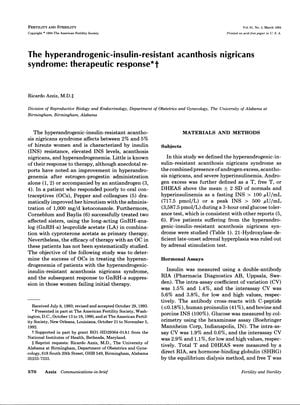The Hyperandrogenic-Insulin-Resistant Acanthosis Nigricans Syndrome: Therapeutic Response
March 1994
in “
Fertility and sterility
”

TLDR Most patients improved with oral contraceptives, but some needed additional treatment.
The study investigated the therapeutic response of five women with hyperandrogenic-insulin-resistant acanthosis nigricans syndrome to oral contraceptives (OC) and spironolactone (SPA). After 6 months, four patients showed adequate suppression of free testosterone (T), increased sex hormone-binding globulin (SHBG) levels, and improved hair growth rate, with two also noting better hair texture. The fifth patient did not respond to OC therapy but showed significant improvement with GnRH-a suppression combined with hormonal replacement and SPA. The study concluded that while most patients respond well to OC treatment, GnRH-a suppression can be effective for those who do not. Hyperinsulinemia was found to enhance LH-stimulated androgen biosynthesis but could not sustain androgen production without sufficient gonadotropin stimulation.




